There’s been a lot of talk this offseason about the Dallas Cowboys offense and what they need to do to be better. A lot of that talk has been centered around the wide receiver group and the tight ends as the most glaring question marks for the Cowboys offense.
As we look back to the 2017 season, it’s easy to see that the Dallas Cowboys have a tremendous offensive foundation from which to build on.
All statistics are courtesy of Graham Barfield from FantasyGuru.com as well as Pro Football Reference.
Also, statistics don’t tell the whole story. They’re a part of the whole when analyzing the productivity and efficiency of an NFL team. Anyone who watched the Dallas Cowboys in the second half of the season will tell you that they struggled and they weren’t good.
The fact that they were bad on offense in the second half of the season makes what I’m about to show you even more remarkable.
Don’t forget to check out my 2018 seasonal outlooks for Dak Prescott and Ezekiel Elliott.
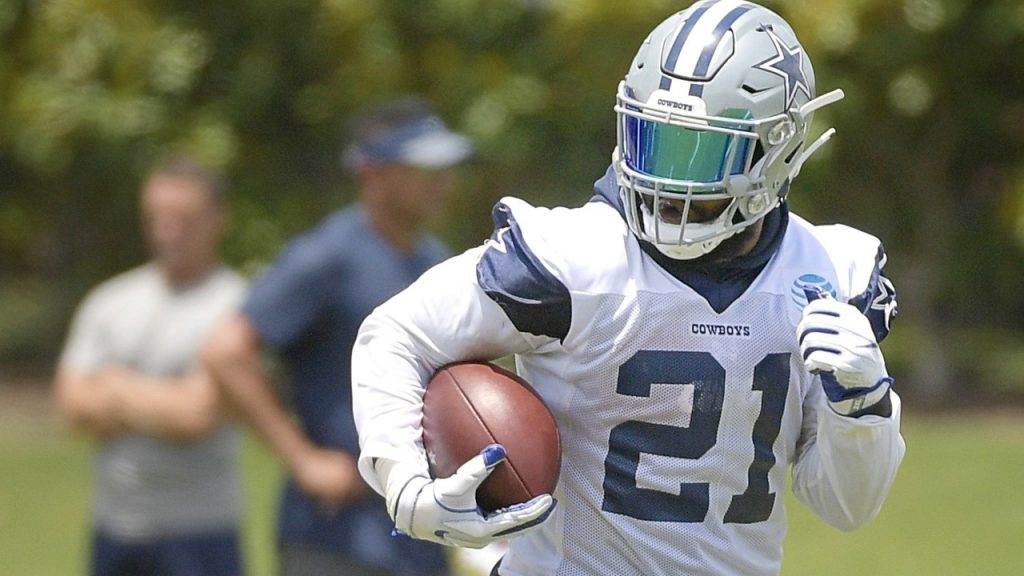
How the Dallas Cowboys Stacked Up In 2017
Plays Per Game – In plays per game, the Dallas Cowboys ranked 18th. That isn’t surprising considering the style of offense they play. As a run first, control the clock team, they’ll likely never led the league in plays run per game on offense. It just isn’t their nature.
Run:Pass Ratio – This statistic won’t surprise Cowboys Nation at all, as the Dallas Cowboys were third in the NFL in rushing percentage. Only the Jacksonville Jaguars and the Buffalo Bills ran the ball at a higher percentage than the Dallas Cowboys.
The Cowboys ran it 47.9% of the time while throwing it 52.1% of the time.
In total run and pass plays per game, the Dallas Cowboys had the fifth most runs per game and the third fewest passing plays per game. Those numbers are exactly what they want to be on offense. I’d imagine 2018 looking similar.
Total Yards Per Drive – They were really good at moving the ball in 2017 as they again were inside the top 10 in total yards per drive, finishing ninth with an average of 32.5 yards per drive. In order to run plays in the Red Zone, you first have to get to the red zone and this indicates that Dallas was really good at moving the ball into scoring range in 2017.
If you imagine most drives starting at the 25 yard line after a touchback, the Dallas Cowboys on average move the ball past the opponent’s 40 yard line. That’s right around Dan Bailey’s field goal range. So, on average, the Dallas Cowboys got into field goal range.
The Chicago Bears were the worst team in the league at 25.64 yards per drive, meaning they’d barely get across the 50 yard line if their average drive started at the 25. The New England Patriots (39.23) led the league in this category and were three yards per play ahead of the Atlanta Falcons.
Percentage of Plays Trailing – This one may surprise Cowboys Nation, it surprised me, but the Dallas Cowboys had the ninth fewest plays run when trailing.
Even when we think of the first half of the season and they got steam rolled by the Denver Broncos in week two, and then struggled on offense in the second half of the season, they still had the ninth lowest percentage of offensive plays run while trailing.
That’s a sign that the team is becoming more and more balanced on the offensive and defensive sides of the ball. That even when the offense wasn’t playing at its best, the defense was helping to keep games close.
In the first half of the season when the defense was struggling without Sean Lee and Anthony Hitchens, the offense kept the games close.
Scoring Percentage – Scoring Percentage from Pro Football Reference indicates the amount of drives that end in an offensive score.
The New England Patriots led the league at 49.4% scoring on every other drive. The Dallas Cowboys were 13th in the NFL at 36.3%. There were three teams that finished ahead of Dallas but didn’t make the playoffs: the Detroit Lions, Baltimore Ravens, and San Francisco 49ers.
Dallas scored points on a little more than a third of their drives. Again, considering how they finished the season offensively, that’s a pretty staggering number. It’s further evidence of how good they were in the first half of the season.
Points Per Game – As a raw stat, points per game still is a good metric when looking at a team’s offensive productivity. The Dallas Cowboys were 14th in the NFL, scoring 22.8 points per game. Over the first eight games of the season, they were scoring 28.25 points per game, which had they kept that up over the course of 16 games, would have been good for fourth in the NFL.
In the second half of the season they averaged 16 points per game. That includes two games against the Washington Redskins and the New York Giants where they scored 38 and 30 points, respectively.
For the other six games in the second half of the season, they averaged 10 points a game.
Points Per Drive – The Dallas Cowboys finished ninth in the NFL in points per drive with 2.08. In fact, the eight teams ahead of them in this category all qualified for the playoffs. The Detroit Lions join the Cowboys as teams that finished in the top 10 but failed to make the playoffs.
Red Zone Plays Per Game – While they were below the league average in plays per game, the Dallas Cowboys ranked seventh in red zone plays per game at 9.1.
As a caveat, I want to mention that doesn’t account for their red zone effectiveness, just how many plays they ran in the red zone. That being said, there is a bit of a correlation between success and playing in the red zone.
Tied with the Super Bowl Champion Philadelphia Eagles and the New Orleans Saints. The New England Patriots led the league at 11.9 plays per game, 1.5 plays per game ahead of the Pittsburgh Steelers.
Aside from the Cowboys, the Baltimore Ravens and San Francisco 49ers were the only teams to finish inside the top 10 and not make the playoffs.
Red Zone Attempts – Pro Football Reference had the Dallas Cowboys reaching the red zone 52 times, the ninth best total in the NFL.
Red Zone Scoring Percentage – The Dallas Cowboys scored in the red zone 59.6% of the time. That was good for sixth in the NFL in 2017. So, they got into the red zone a lot and scored nearly two-thirds of the time that they reached the red zone.
Passing Yards Per Attempt – Dak Prescott and the Dallas Cowboys were below the league average finishing 18th at 6.37 yards per attempt.
While not great, and below Dak Prescott’s 8 yards per attempt in 2016, the 6.37 was better than playoff teams like the Carolina Panthers and the Buffalo Bills. And with the protection issues we saw with the Dallas Cowboys, it’s no wonder the number is as low as it is. Dak had to get rid of the ball quicker than he probably would have liked, or risk getting driven into the turf for the umpteenth time.
Over the first half of the season it was just over seven yards per attempt. In the second half it dropped to 6.52. Not a huge difference, but definitely indicative of him trying to get the ball out quicker to his shallow-depth targets.
Only three teams in the top 10 in passing yards per attempt failed to make the playoffs. The Los Angeles Chargers, Detroit Lions, and Tampa Bay Buccaneers. Though the Chargers and the Lions both finished with a 9-7 record, the Bucs went 5-11.
So that should tell you, that while it’s an important statistic, as it can indicate your ability as an offense to stretch the field, it isn’t everything.
Rushing Yards Per Carry – The Dallas Cowboys finished third in the NFL in rushing yards per attempt in 2017, despite missing Ezekiel Elliott for six games and his yards per carry number dropping a full yard per carry from 5.1 in 2016 to 4.1 in 2017.
Prescott’s yard per carry increased dramatically from 4.9 yards per carry to 6.3. That’s nearly a yard and a half more per carry on average from 2016 to 2017. Not only did Dak run more last season than he did his rookie season, he was better at it as well.
Percentage of Runs Stuffed – The Dallas Cowboys have one of the best running games in the NFL, led by the three All-Pros they have on the offensive line. That offensive line should be better in 2018 than 2017, but in 2017, they had the sixth fewest runs stuffed. A run that got stuffed is one that went for no gain or a loss.
Only 17% of the Dallas Cowboys’ runs in 2017 were “stuffed.” Out of 480 rush attempts that comes out to be 81.6 carries over the course of the season that went for a loss or no gain. An average of 5.1 per game. With teams knowing that the Dallas Cowboys want to run the ball and loading up the box to play the run, that’s a pretty good rate.
The New Orleans Saints led the league in this category at 15%, but ran it 36 fewer times than Dallas.
Yards Before Contact Per Attempt – If there was one thing the Dallas Cowboys struggled with in the run game, it was yards before contact.
They were very good at creating space for Ezekiel Elliott to run in 2016, but the downgrade along the offensive line from Ron Leary and La’el Collins at left guard to Jonathan Cooper, as well as missing Tyron Smith for much of the second half of the season, obviously hurt the running game last season.
They ranked 21st in yards before contact, a full half a yard behind the league leaders, the New Orleans Saints.
The holes for the running game weren’t nearly as big in 2017. Don’t expect that to repeat itself in 2018.
Pressure Rate Allowed – This was the story of the Dallas Cowboys 2017 season.
Though not nearly as bad as some other teams, the Dallas Cowboys had the 11th highest pressure rate at 36.6%. The Houston Texans were the worst team, allowing a pressure about every other drop back at 46.4%.
While some of it was the play on the left side of the offensive line, we also know that Dallas receivers weren’t getting open with the same proclivity, which would force Dak to hold onto the ball longer than he’d like. So, hopefully some scheme restructuring and bringing in receivers who can use quickness and route running to get open, will allow Prescott to get rid of the ball quicker.
Sack Rate Allowed – Though the Dallas Cowboys ranked 11th in pressure rate allowed, Dak Prescott did a good job avoiding sacks as they only allowed a sack on 6.4% of his drop backs, good for ninth in the NFL.
So, they kept the sacks down, but Prescott was still under a tremendous amount of pressure. Connor Williams in at left guard and improved depth at tackle should help if there is another Tyron Smith injury.
✭ ✭ ✭ ✭ ✭
While none of the above numbers in and of themselves stand as a basis for determining an offense’s worth, as a whole it’s clear the Dallas Cowboys were a good offense in 2017.
We’ve outlined here several times that the Cowboys’ 2017 season was a tale of two halves.
Amazingly, despite how incredibly bad the second half of the season was for the Dallas Cowboys, as the stats above show they were a really good offense. It just shows you how good they were on the offensive side of the ball in the first half to carry them through their insanely poor first half of the season.
Have hope Cowboys Nation, the Dallas Cowboys have a really good offensive team and will be one of the better teams in the league in 2018.



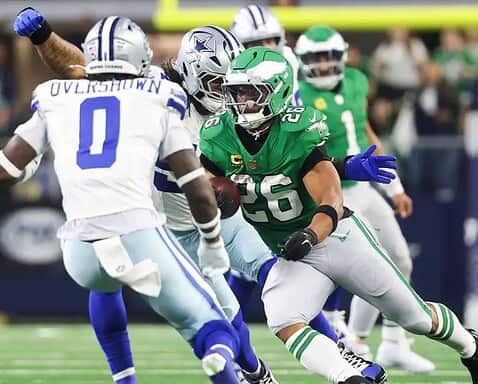
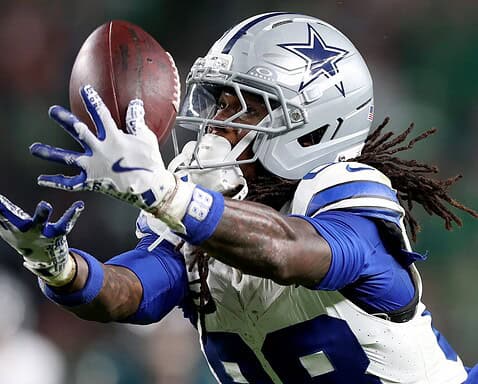

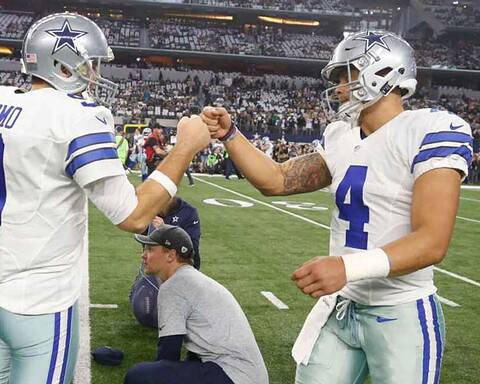
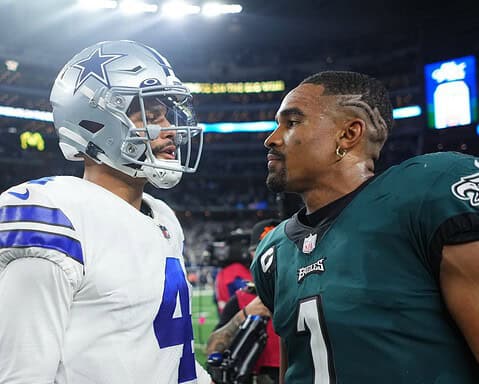
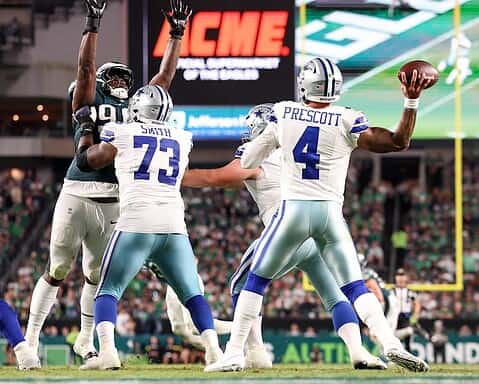
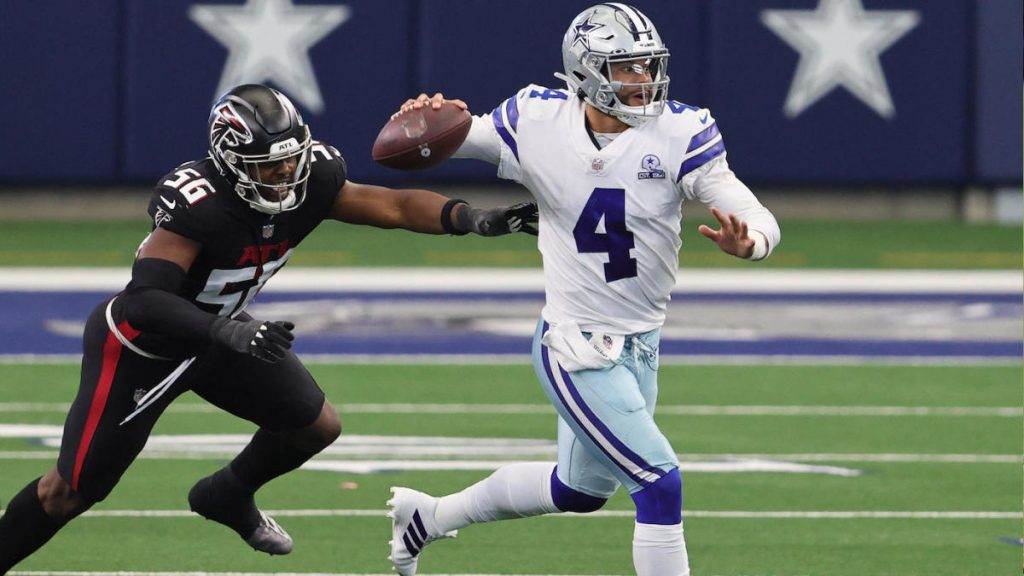
Some of the BEST pure analysis that qualifies as news this past off-season. Well done, john! I might add that given how Dak felt forced to throw to Dez and his reliance on Witten may have greatly adversely impacted quite a few of those stats.
Hey Ethan. Thanks for reading and the feedback.
I agree with you that Dak seemed to really be working hard to make the Dez relationship/chemistry work. But, this one of those things that just never looked right. Aside from the Playoff game against Green Bay.
I think he’ll miss Witten’s reliability even if Witten had been declining, but I think that Allen Hurns will fill that over the middle safety valve role for Dak this season.
I actually like what the FO did with the entire wr unit added some nice picks Thru FA and draft they are going to surprise a lot of folks also like the TEs even if unproven I like all the pieces they added coupled with a dedicated /refocused Zeke and powerhouse O line
With all that being said
This tells me, in a nutshell, that Dallas, in all actuality, won’t necessarily be better, but at least just as good as last year
Allow me to clarify :
Dallas played much worse than what they were last season
They underachieved for multiple reasons
So this year I anticipate better, but better will be what they were capable of last year
Feel me?
Now with this said, u also would be disappointed if they don’t far exceed last year
And yes, that’s considering no Dez Bryant or Jason Witten
Dallas can’t be as predictable because they’re almost a totally different team